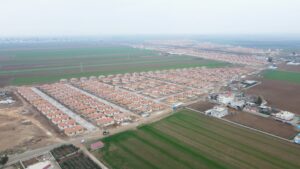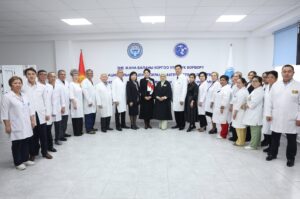In Türkiye, where the fertility rate has dropped to 1.48 and the elderly population ratio has risen to 10.6%, it is projected that by 2050, one in every four people will be over the age of 65.
According to data shared by the Turkish Statistical Institute (TurkStat), the country’s fertility rate fell to 1.48 in 2024, remaining below the population replacement threshold of 2.1, while the proportion of the elderly population reached 10.6%.
With one in every 10 people currently over the age of 65, Türkiye is classified as a “very aged population” country by United Nations criteria. Population projections show that by 2050, one in every four people will be over 65; by 2075, one in every three; and by 2100, four out of every 10 people will be in this age group.
Mehmet Ali Eryurt, a faculty member at Hacettepe University’s Institute of Population Studies, shared insights on Türkiye’s demographic outlook with Anadolu Agency (AA) on the occasion of World Population Day on July 11.
He noted that in the first census conducted in Türkiye in 1927, the country’s population was 13 million, while the world population was 2 billion. Since then, Türkiye’s population has increased sixfold to over 85 million, while the world population has surpassed 8 billion, a fourfold increase.
Eryurt highlighted one of the most significant factors altering Türkiye’s demographic structure, a rapid decline in birth rates. Until the mid-1960s, the average fertility rate was around six children per woman, followed by a sudden drop.
“While in Western countries this change happened gradually over centuries, in Türkiye it occurred in a delayed yet accelerated manner. For example, in England, the fertility rate dropped from six to 1.5 over more than 200 years. In Türkiye, this change took place in less than 60 years,” he explained.
He pointed to several factors contributing to the decline in fertility rates, including economic, social, cultural and biological reasons, as well as urbanization, industrialization, rising education levels, lifestyle changes, and shifting values and norms. He also mentioned that family-oriented values like sacrifice and devotion have been increasingly replaced by individualistic perspectives.
Eryurt emphasized that birth rates remain the most critical factor determining the country’s population trends. “According to recent statistics, the total fertility rate is 1.48 children, but in major cities, this rate is even lower, 1.2 in Istanbul, and below 1.2 in Ankara and Izmir. Among women with higher education, it has dropped to 1.2 children,” he said.
Comparing Türkiye to culturally similar countries, he projected that the fertility rate decline will continue, possibly reaching around 1.2 children per woman. He added: “According to various projection scenarios, the medium scenario indicates that Türkiye’s population will reach around 93 million before beginning to decline, falling to approximately 70 million by the 2100s. Under a low-fertility scenario, the population will never exceed 90 million and will fall to 54 million by 2100. Along with changes in total population size, there will be significant shifts in age structure.”
He also added: “In recent years, the share of the population aged 65 and older surpassed 10%, leading to Türkiye’s classification as a very aged country. Currently, roughly one in every 10 people is over 65. Projections show that by 2050, one in four people will be over 65; by 2075, one in three, and by 2100, four out of every 10 people will be in this age group.”
Eryurt also discussed the social impact of falling birth rates on family structures, noting that about one in every five households in Türkiye is a single-person household, and the rate of single-parent households has exceeded 10%.
He observed a continuing increase in single-person households and a trend toward smaller average household sizes. “In the 1950s, the average household size was six people; by the early 2000s, it fell to four, and now it is around three. Projections suggest this downward trend will continue, which will inevitably affect household and family types,” he said.
Relating this trend to divorce rates, Eryurt stated, “We have reached a point where for every 10 marriages, there are three divorces, roughly one divorce for every three marriages. This pattern has been emerging since 2020. This increase in divorces contributes to the rise in single-parent households. Family roles are shifting, and these changing roles sometimes cause conflicts. We can expect this situation to continue until a new balance and role distribution is established.”
He highlighted that the average age at first marriage is rising into the 30s, and the age at first birth is also increasing, with nearly half of births occurring to women aged over 30.
Calling for a holistic approach to solutions, Eryurt noted, “Some measures to increase birth rates have been implemented recently. For example, a marriage loan program has been introduced to encourage early marriage and increase marriage rates. This program was initially launched for earthquake-affected regions, then extended as a pilot in certain provinces, and now it is being expanded nationwide.”
“Additionally, birth incentives based on the birth order of the child are in effect. Maternity leave, which used to be very short, has now been extended to nearly a year. These are some of the steps being taken,” he said.




















































Be First to Comment